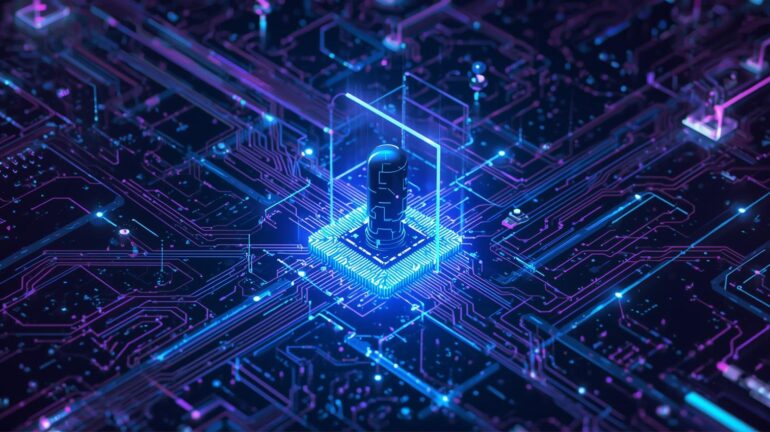
As the world becomes increasingly digital, the stakes for cybersecurity have never been higher. Every day, organizations face a growing number of cyber threats from ransomware attacks and data breaches to sophisticated phishing campaigns. Traditional security measures, while necessary, are often reactive and struggle to keep pace with the speed and complexity of modern cybercrime. Enter Artificial Intelligence (AI), a transformative technology that is reshaping the way we defend digital infrastructure and making cybersecurity more proactive, intelligent, and adaptive.
AI’s greatest advantage in cybersecurity lies in its ability to analyze massive amounts of data in real time. Cyber threats are evolving continuously, and human analysts alone cannot process the sheer volume of logs, network traffic, and security alerts generated every second. AI algorithms, particularly machine learning models, can identify patterns, detect anomalies, and flag potential attacks before they escalate. By recognizing unusual behavior such as unauthorized access attempts or atypical data transfers AI can alert security teams instantly, enabling faster and more precise responses.
Threat detection and prevention have been revolutionized by AI. Traditional signature-based antivirus systems rely on known threat patterns, which makes them vulnerable to zero-day attacks. In contrast, AI can detect previously unseen malware by identifying abnormal behavior or code patterns. For example, an AI system might notice that a user account suddenly accesses sensitive files at odd hours or that an unfamiliar device is interacting with critical servers. By recognizing these anomalies, AI helps prevent breaches before damage occurs, shifting cybersecurity from reactive defense to proactive protection.
AI is also strengthening incident response and automation. In the event of an attack, AI can help contain threats quickly, isolate compromised systems, and even suggest mitigation strategies. Security teams benefit from AI-assisted automation, which reduces human error and speeds up response times. For organizations with limited cybersecurity staff, AI acts as a force multiplier, allowing smaller teams to manage complex networks effectively.
Another emerging application is predictive cybersecurity. By analyzing historical data and threat intelligence, AI models can forecast potential vulnerabilities and anticipate attack vectors. This predictive capability allows organizations to patch weaknesses before they are exploited, making systems more resilient. In a world where cyberattacks are becoming increasingly sophisticated and persistent, predictive AI provides a critical strategic advantage.
AI is also playing a vital role in fraud detection and identity protection. Financial institutions, e-commerce platforms, and online services use AI to monitor transactions, identify suspicious patterns, and verify user identities. AI-powered authentication systems, such as behavioral biometrics, analyze how users type, swipe, or navigate systems to detect impersonation attempts. These capabilities enhance security without creating friction for legitimate users.
Despite its promise, AI in cybersecurity is not without challenges. One major concern is that cybercriminals are also leveraging AI. AI-driven attacks can automate phishing, generate sophisticated malware, and even bypass security systems more effectively than ever before. This creates an ongoing arms race, where defenders must continually innovate to stay ahead of attackers.
Data privacy and ethical considerations are also crucial. AI systems require access to vast amounts of sensitive data to learn and detect threats effectively. Organizations must ensure that data handling complies with privacy regulations and ethical standards, balancing security needs with individual rights.
Moreover, over-reliance on AI can be risky. While AI can identify anomalies and recommend actions, human oversight remains essential. Machines cannot fully understand context or make judgment calls that consider broader organizational implications. The most effective cybersecurity strategies combine AI’s computational power with the expertise and intuition of trained professionals.
In practice, AI has already proven its value. Governments, enterprises, and tech companies are deploying AI-driven security solutions to protect critical infrastructure, financial systems, and personal data. The UAE, for example, has invested heavily in AI and cybersecurity initiatives as part of its national strategy, recognizing that digital defense is essential for economic growth and national security.
Looking forward, AI is set to define the next frontier of cybersecurity. Its ability to detect, predict, and respond to threats in real time transforms digital defense from a reactive necessity into a strategic capability. While challenges remain, organizations that adopt AI thoughtfully will not only protect their assets but also gain a competitive advantage in a world where trust and security are paramount.
AI in cybersecurity is more than a technological upgrade it is a paradigm shift. By combining intelligent machines with human expertise, we are entering an era where cyber threats can be met with speed, precision, and foresight, securing the digital world for individuals, organizations, and nations alike.